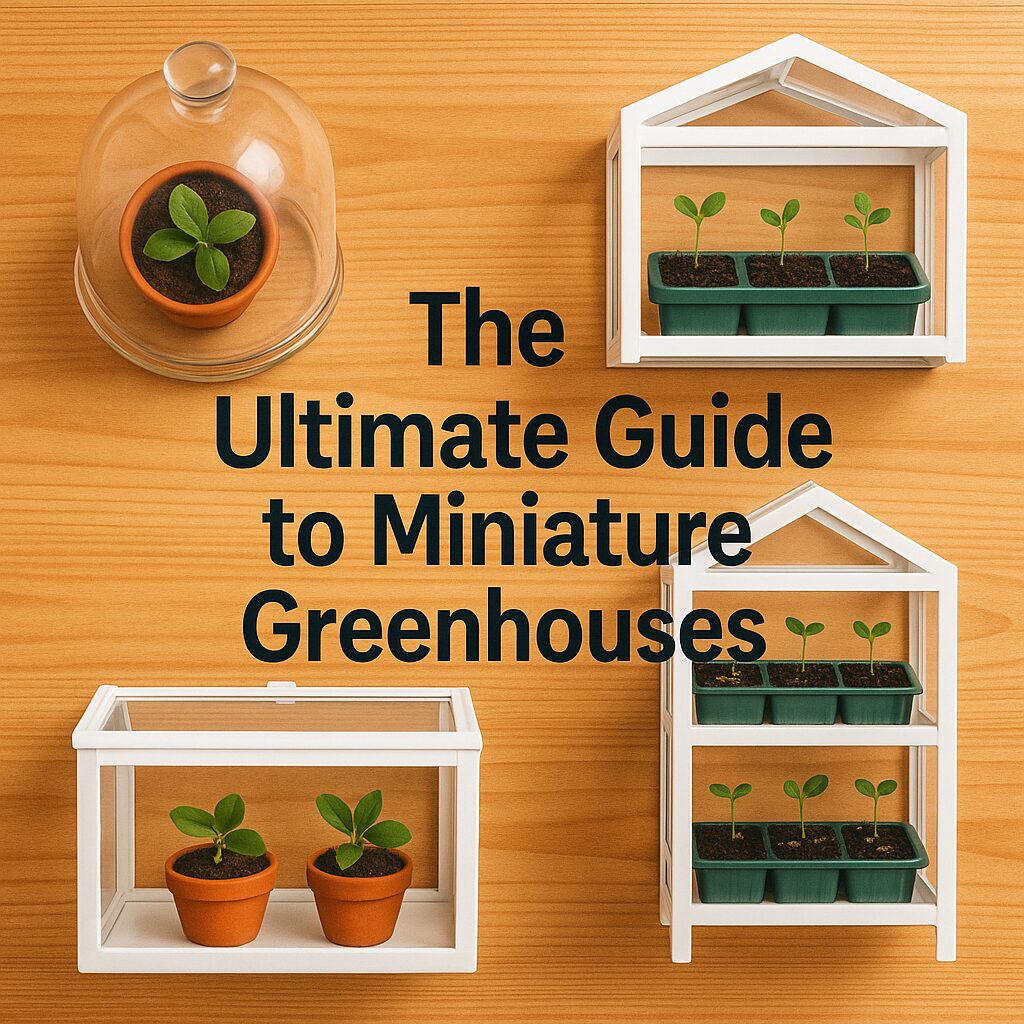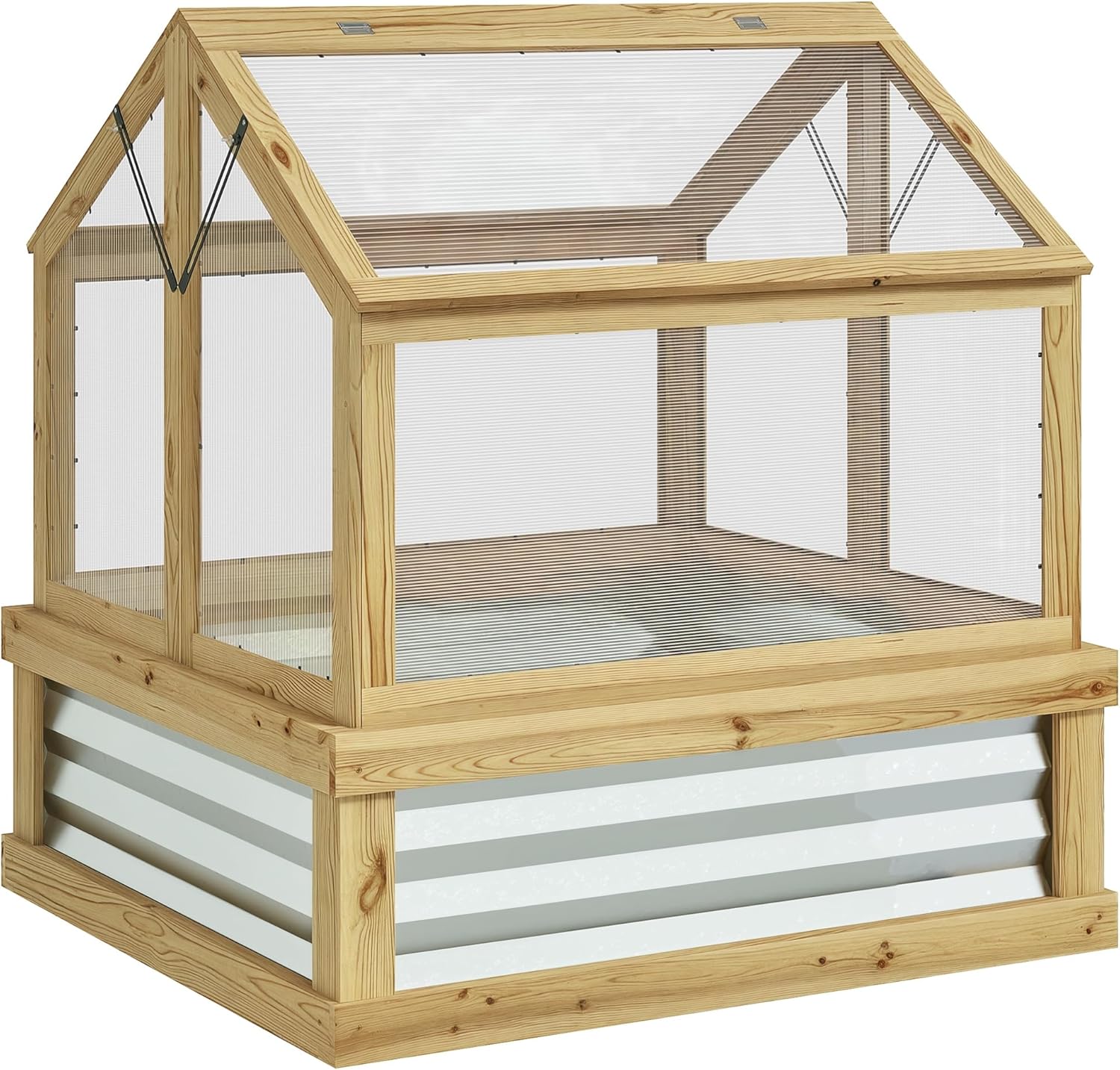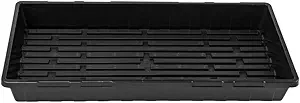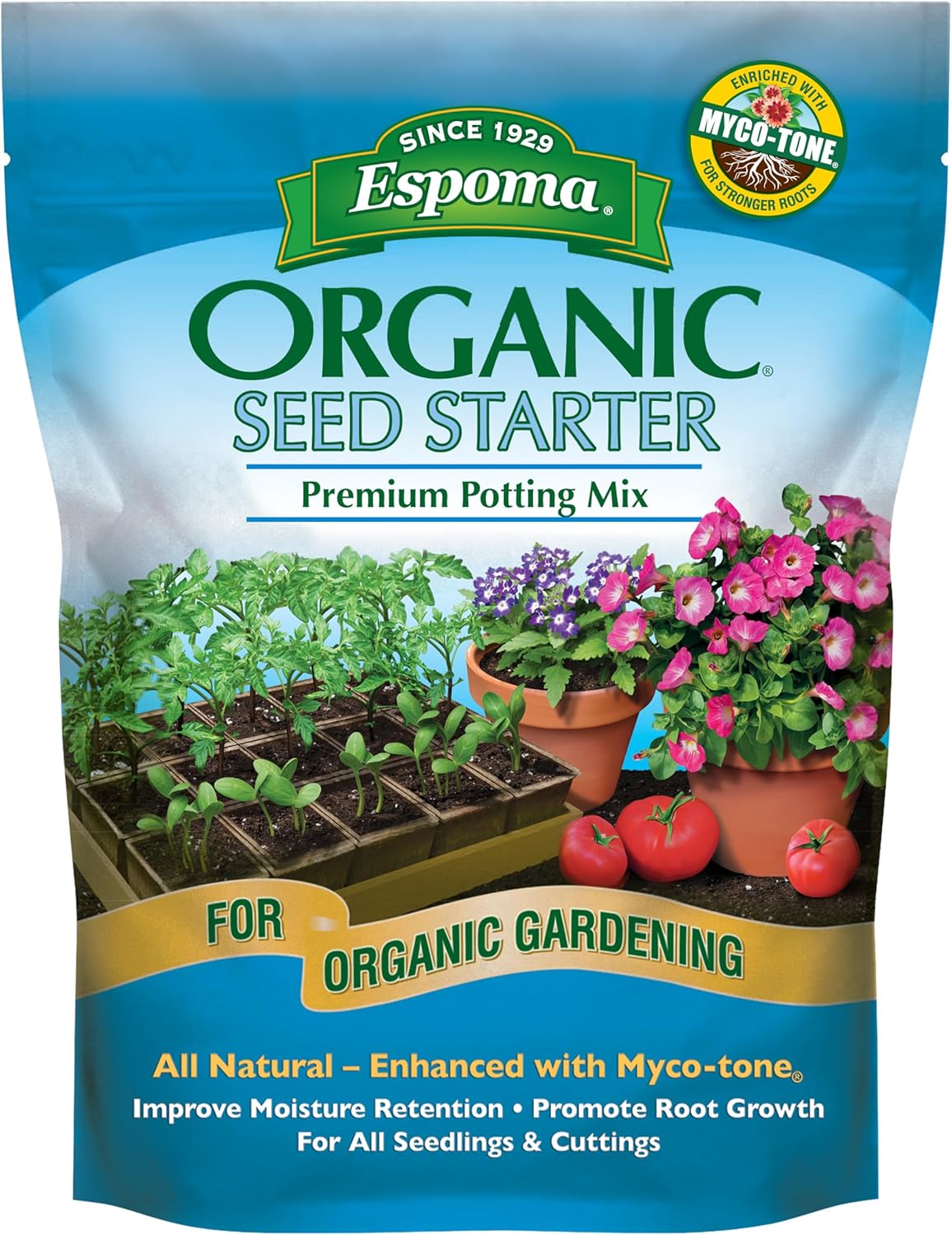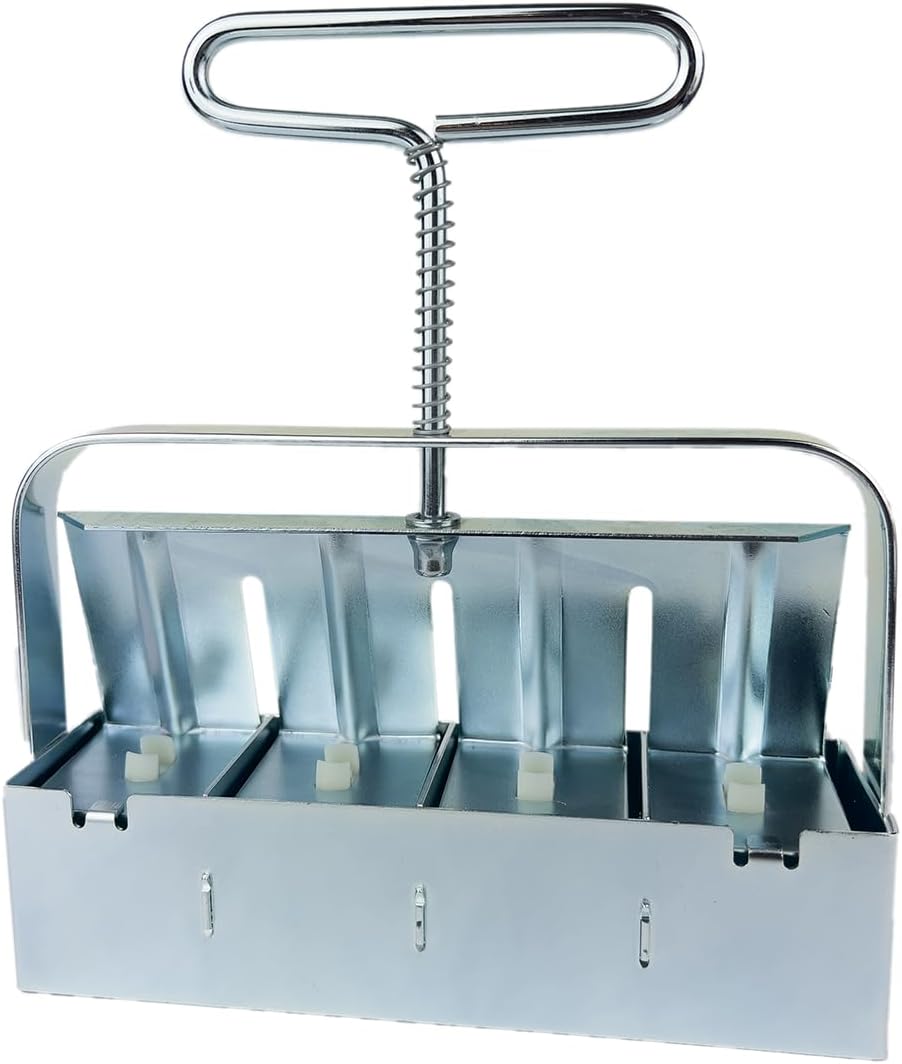The Ultimate Guide to Miniature Greenhouses: Big Gardening Dreams in Small Spaces
I still remember the feeling. I was living in a third-floor apartment with nothing but a six-foot balcony and a desperate urge to grow my own food. I’d watch gardening shows, dreaming of sprawling vegetable patches and walk-in greenhouses, feeling completely left out. That is, until I discovered the humble, game-changing magic of the miniature greenhouse. It was a small, tiered plastic structure, but to me, it was a portal. It allowed me to start seeds weeks before my neighbors, to grow a continuous supply of fresh herbs, and to feel like a “real” gardener, despite my lack of a yard.
Over the last twenty years, I’ve used dozens of these small-scale wonders, from simple tabletop seed starters to elegant indoor display cases. I’ve learned what makes a good one, what makes a great one, and how to get the absolute most out of them. They are far more than just a novelty; they are one of the most powerful and accessible tools in a modern gardener’s arsenal, democratizing gardening for everyone, regardless of space.
In this guide, I’m going to pour all that experience into helping you find the perfect miniature greenhouse for your needs. We’ll explore the best models on the market based on my hands-on testing, and I’ll share my most valuable pro tips for turning that small space into a powerhouse of productivity.
A miniature greenhouse is a compact, enclosed structure designed to create a controlled growing environment on a small scale. They are perfect for seed starting, propagating cuttings, growing herbs and salads, protecting tender plants, and extending the growing season. The best models, such as tiered vertical greenhouses for balconies or indoor seed starting stations with grow lights, trap humidity and warmth, leading to much higher germination rates and faster growth for young plants.
Their primary purpose is to give gardeners without space for a full-size structure the ability to control a plant’s microclimate, making them ideal for apartment balconies, patios, and even indoor tabletops.
The Mighty Power of Going Mini: Why You Need One
Don’t let their small size fool you. A miniature greenhouse offers an incredible array of benefits that can fundamentally change the way you garden. Here’s why I believe every gardener, from novice to expert, should have one.
- A World-Class Seed Starting Station: This is their superpower. Seeds need high humidity and consistent warmth to germinate. A mini greenhouse traps moisture, creating the perfect steamy environment that softens the seed coat and encourages sprouting. My germination rates for fussy seeds like peppers and lavender easily double when I start them in a mini greenhouse versus on an open windowsill.
- Your Personal Season Extender: A miniature greenhouse is like a time machine for your plants. It allows you to start your summer vegetables (check out our list of the best vegetables to grow in a greenhouse) a month or two before your last frost date. In the fall, it can shield your herbs and greens from the first few frosts, giving you weeks of extra harvest.
- A Safe Haven for Tender Plants: Do you love succulents but live in a cold climate? Want to overwinter your prized geraniums or begonias? A small greenhouse provides the perfect sheltered spot to protect them from the harshest weather without taking up precious space indoors.
- The Ultimate Space Solution: This is the most obvious benefit. Balconies, patios, decks, even a well-lit kitchen counter—any small space can become a productive garden. Vertical, tiered models are especially brilliant, multiplying your growing area without increasing the footprint. This is a key principle we also discuss in our guide to cheap greenhouse staging.
- A Low-Risk Learning Lab: For new gardeners, a full-size greenhouse can be intimidating. A mini version is the perfect “gardening laboratory.” You can learn the fundamental principles of managing heat, humidity, and airflow on a small, manageable scale. It’s an essential first step in many greenhouse gardening tips for beginners.
My Top Picks: The Best Miniature Greenhouses of 2025
I’ve assembled, tested, and grown in more mini greenhouses than I can count. These are the models that consistently rise to the top, offering the best performance, durability, and value for your money.
1. The Balcony All-Star: Gardman 4-Tier Mini Greenhouse

My Verdict: This is the classic, the icon, the model that has probably launched a million gardening journeys. If you have a balcony, patio, or a small nook in your yard, this vertical greenhouse is the single most efficient way to maximize your growing space for a minimal cost. It’s the perfect workhorse for the urban gardener.
My Hands-On Experience
Assembly is a 10-minute, tool-free affair. The powder-coated steel poles push-fit into plastic connectors, creating a surprisingly sturdy frame. The four wire shelves provide a ton of real estate. I can comfortably fit eight standard 1020 seed trays in this unit—that’s hundreds of seedlings in a footprint of only about three square feet! The clear polyethylene cover fits snugly over the frame and has a large, roll-up zippered door for easy access and ventilation.
This design is brilliant at trapping humidity. On a cool spring day, the inside is warm and moist, exactly what seedlings crave. The wire shelves ensure good drainage and airflow from below. Its one weakness is the wind; because it’s tall and light, it can act like a sail. It is absolutely crucial to place it in a sheltered spot and weigh down the bottom shelf with bricks or secure the frame to a railing with zip ties.
Pros
- Incredible space efficiency for a small footprint
- Extremely affordable and an excellent value
- Easy, tool-free assembly
- Creates the perfect high-humidity environment for seeds
- Large zippered door for access and ventilation
Cons
- Very lightweight and must be secured against wind
- Shelves have a limited weight capacity (best for trays, not huge pots)
- Cover may need replacing after 2-3 seasons of intense sun
Who It’s Best For: The apartment or condo dweller with a balcony, or anyone needing a high-capacity, dedicated seed-starting station for their backyard.
2. The Indoor Champion: Bstrip Greenhouse with Grow Lights

My Verdict: If you’re serious about starting seeds indoors or want to grow herbs and greens year-round without relying on a sunny window, this is your all-in-one solution. By integrating shelving, a cover, and full-spectrum LED grow lights, this kit eliminates all the guesswork and provides a professional-grade setup in a compact, attractive package.
My Hands-On Experience
This unit feels like a significant step up in quality. The metal frame is robust, and the shelving is sturdy. What sets it apart, of course, are the integrated grow lights. These are not weak, purple-hued lights; they are bright, full-spectrum LEDs that clip neatly underneath each shelf, providing intense, direct light to the plants below. I was impressed by how healthy and stocky my seedlings were—no more of the weak, leggy stretching you get from inadequate window light.
The clear cover drapes over the front and can be rolled up or removed entirely. I typically keep it down for the first week to boost humidity for germination, then roll it up to increase airflow once the seedlings have emerged. It’s perfect for a basement, a spare room, or any corner of your home. You can grow a perpetual supply of lettuce, microgreens, and herbs all winter long. It’s a self-contained, year-round garden.
Pros
- All-in-one solution with frame, shelves, cover, and lights
- High-quality, full-spectrum LED grow lights included
- Sturdy and well-built frame
- Perfect for indoor gardening without a sunny window
- Eliminates leggy seedlings
Cons
- Significantly more expensive than basic models
- Requires access to an electrical outlet
- Generates some ambient light in the room
Who It’s Best For: The serious indoor gardener, seed-starting enthusiast, or anyone who wants a foolproof, year-round supply of greens and herbs without relying on natural sunlight.
3. The Garden Workhorse: Polycarbonate Cold Frame
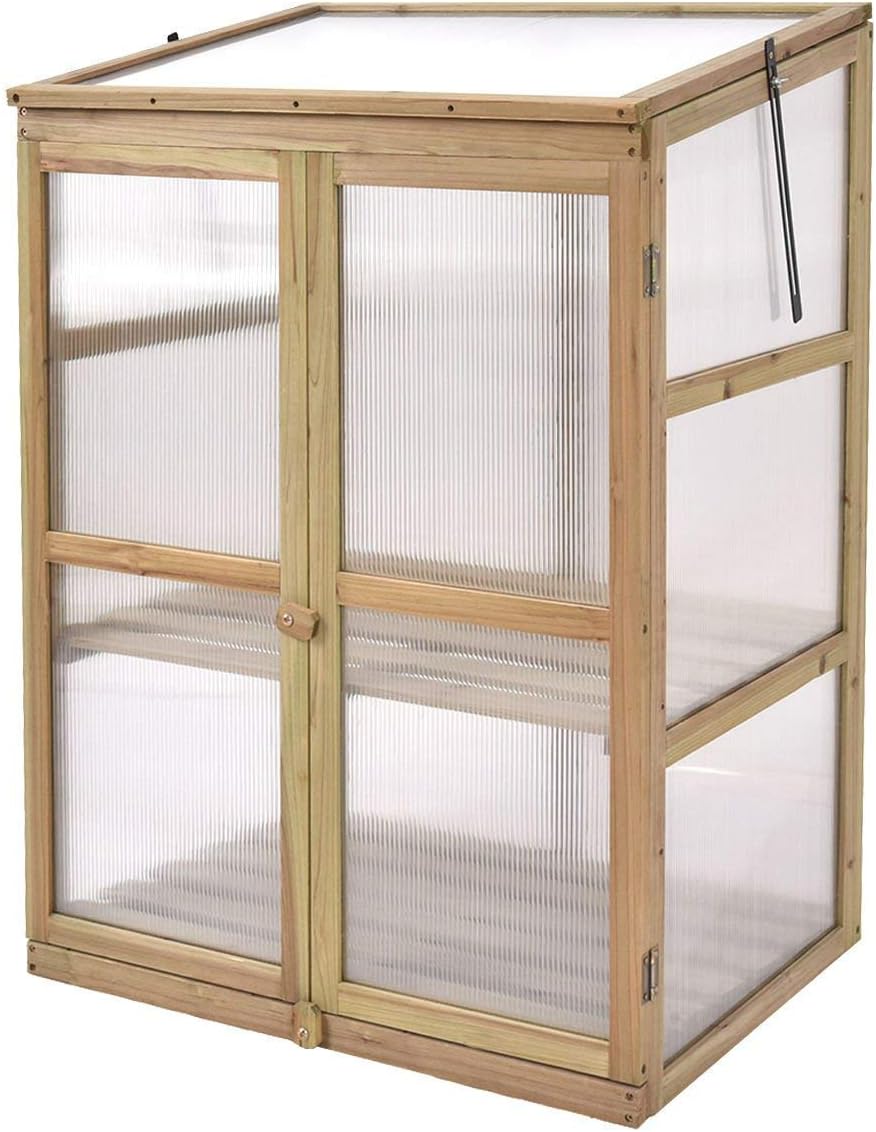
My Verdict: A cold frame is a classic, time-tested tool for any serious gardener. This isn’t just a plant holder; it’s a season-extending machine that you place directly in your garden. This model, with its durable aluminum frame and insulating twin-wall polycarbonate panels, is a massive upgrade over flimsy plastic versions and offers near-permanent durability.
My Hands-On Experience
Assembly takes a bit more effort—about 30-45 minutes with a screwdriver—but the result is a rock-solid structure. The twin-wall polycarbonate is the same material used in high-end, full-size greenhouses. It offers superior insulation compared to single-pane glass or plastic film, and it diffuses sunlight beautifully, preventing scorch. I use this directly over my garden beds in early spring to warm the soil and plant my salad greens a month early. In the fall, I move it over my carrots and parsley, and I’m able to harvest them into December.
The hinged, adjustable lid is the key feature. You can prop it open at various angles to control ventilation, which is crucial because these can get surprisingly hot. Learning how hot greenhouses get, even small ones, is vital. It’s also the perfect place to “harden off” your indoor-started seedlings, gradually acclimating them to outdoor conditions. This is a robust, long-term investment for any gardener with a yard.
Pros
- Excellent insulation from twin-wall polycarbonate panels
- Durable, rust-proof aluminum frame
- Perfect for hardening off plants and extending seasons in-ground
- Adjustable lid for precise ventilation control
- Much more durable and weather-resistant than film-covered models
Cons
- More expensive than basic mini greenhouses
- Assembly is more involved
- Not as portable or suitable for balconies
Who It’s Best For: The backyard gardener who wants a durable, long-term solution for protecting in-ground plants, hardening off seedlings, and achieving the earliest spring and latest fall harvests.
4. The Countertop Cutie: IKEA SOCKER Mini Greenhouse

My Verdict: Sometimes you just need something small, simple, and stylish. The IKEA SOCKER greenhouse is a decorative and surprisingly functional little tool for the indoor plant enthusiast. It’s perfect for rooting cuttings, growing a few choice herbs, or creating a high-humidity environment for a prized tropical plant right on your windowsill.
My Hands-On Experience
This little greenhouse is as much a piece of home decor as it is a gardening tool. The powder-coated steel frame and clear plastic panels look great in any room. I’ve used it on my kitchen counter to keep a small pot of basil and mint thriving. The roof panels are hinged and can be propped open slightly to vent excess heat and humidity. This is crucial for preventing mold and ensuring air circulation.
It’s the perfect propagation station. The enclosed space keeps cuttings from drying out while they develop roots. I’ve also used it as an “ICU” for small, struggling houseplants that need a boost of humidity. It’s not going to grow a salad, but for its intended purpose—housing one or two small plants in a controlled, attractive environment—it’s an absolute winner.
Pros
- Stylish and decorative design
- Perfect for a few small herbs or propagating cuttings
- Great for increasing humidity for tropical houseplants
- Adjustable roof vents for airflow control
- Very affordable
Cons
- Very small capacity—only holds a few small pots
- Not suitable for large-scale seed starting
- Plastic panels can scratch over time
Who It’s Best For: The indoor plant parent, houseplant propagator, or anyone who wants to grow a few culinary herbs on their kitchen counter in style.
Maximizing Your Miniature Greenhouse: Pro Tips for Huge Results
Getting a mini greenhouse is the first step. Using it effectively is the next. Here are my essential tips for turning your small space into a thriving ecosystem.
- Location is Everything: Most vegetables and flowers need at least 6-8 hours of direct sunlight. Outdoors, place your greenhouse in the sunniest spot you have. Indoors, a south-facing window is best. If you don’t have enough natural light, you must supplement with a grow light, like the ones in the Jumbl kit.
- Ventilate, Ventilate, Ventilate! This is the most important rule. A sealed mini greenhouse can get dangerously hot, even on a cool, sunny day. On any day over 60°F, you need to open the door or prop the lid to let heat escape. Good airflow from one of the best greenhouse fans (even a small clip-on one) can also prevent fungal diseases.
- Water from the Bottom: In a high-humidity environment, wet leaves can lead to disease. The best way to water seedlings is to place their trays or pots in a deeper tray of water for 20-30 minutes. The soil will soak up what it needs through the drainage holes. This keeps the foliage dry.
- Don’t Be Afraid to Upgrade Shelving: The wire shelves that come with many tiered units are functional, but you can upgrade them. I often replace one or two shelves with sturdy plastic plant trays or even cut a piece of wood to create a solid surface for my cheap greenhouse staging, which is more stable for tiny pots.
- Manage Pests Proactively: The warm, humid environment is also attractive to pests like fungus gnats and spider mites. Inspect your plants regularly. A small fan for air circulation helps deter fungus gnats. For more serious issues, review our guide on greenhouse pest control methods.
- Know the Ideal Temperature: While you want it warm, you don’t want it to cook. Most seedlings thrive between 70-80°F. A simple stick-on thermometer is a great investment. For more details, you can learn about what is the ideal temperature for a greenhouse.
Frequently Asked Questions
1. Can I use a miniature greenhouse in the winter?
Yes, but its function changes. A standard, unheated mini greenhouse will not keep plants warm enough to grow actively through a freezing winter. However, it will act as an excellent cold frame, protecting dormant or cold-hardy plants (like kale, carrots, and many perennials) from harsh winds and extreme temperature swings. It provides a few degrees of frost protection, which can be the difference between life and death for some plants. For active growth in winter, you’d need to add a safe, small heater, as discussed in our best greenhouse heaters guide.
2. How do I prevent mold and algae from growing inside?
Mold and algae are signs of too much moisture and not enough airflow. The key is ventilation. Make sure you open the door/lid daily to let fresh air circulate. A small, clip-on fan can make a huge difference. Avoid overwatering and ensure your pots have good drainage. If you see mold, wipe down the surfaces with a diluted hydrogen peroxide solution.
3. What are the best plants to grow in a miniature greenhouse?
They are ideal for: 1) Starting seeds for almost any plant. 2) Growing compact, fast-growing crops like salad greens, spinach, radishes, and microgreens. 3) A continuous supply of herbs like basil, cilantro, parsley, and mint. 4) Propagating houseplants from cuttings. They are not suitable for large, sprawling plants like indeterminate tomatoes or zucchini (though you can start them inside before moving them out).
4. Do I need to worry about the plastic cover being safe for growing food?
The vast majority of greenhouse covers are made from polyethylene (PE) or PVC. These plastics are considered stable and safe for gardening use and do not leach harmful chemicals into the soil or plants. It’s the same type of material used in commercial agriculture worldwide.
Your Garden Awaits, No Matter the Size
The biggest barrier to gardening is often not a lack of skill or desire, but a perceived lack of space. The miniature greenhouse shatters that barrier. It’s a powerful statement that anyone, anywhere, can participate in the joy of growing their own plants.
It’s a tool that empowers you to raise a tiny jungle on your balcony, a gourmet herb garden on your countertop, or an army of seedlings for your summer vegetable patch. It puts you in control of the elements on a small, manageable scale. Whether you choose the incredible value of the Gardman 4-Tier or the all-in-one power of the Bstrip Grow Light Kit, you’re not just buying a product; you’re unlocking a whole new world of gardening potential.

